She feels really easy and comfortable to sail, even in a good breeze and a chop.
- Fast, comfortable and stable
- Versatile layout
- Stylish functional cabin and room for two to overnight in comfort
- Good fuel economy over a range of speeds
The Book of Ecclesiastes tries to tell us that there is “nothing new under the sun.” As a boat reviewer, I often find this sentiment rings true – most of the boats we review are an evolution of a previous model, or perhaps a slight refinement of an existing design. However, every so often, something emerges that shatters these preconceived notions. Like the Quarken 27 Cabin…
When Daniel Painter from Auckland-based dealer Your Marine assured us that the boat would be “interesting,” I put it down to mere marketing hyperbole. After all, how different could a 27-foot, outboard-powered cabin boat weighing approximately 2.7 tonnes and with a beam of 8.5 feet (2.59 metres), truly be? Having reviewed numerous boats in this size range and with a boating companion who once owned a similar vessel, I felt I had a clear idea of what to expect in terms of dimensions, performance, handling, and fuel efficiency.
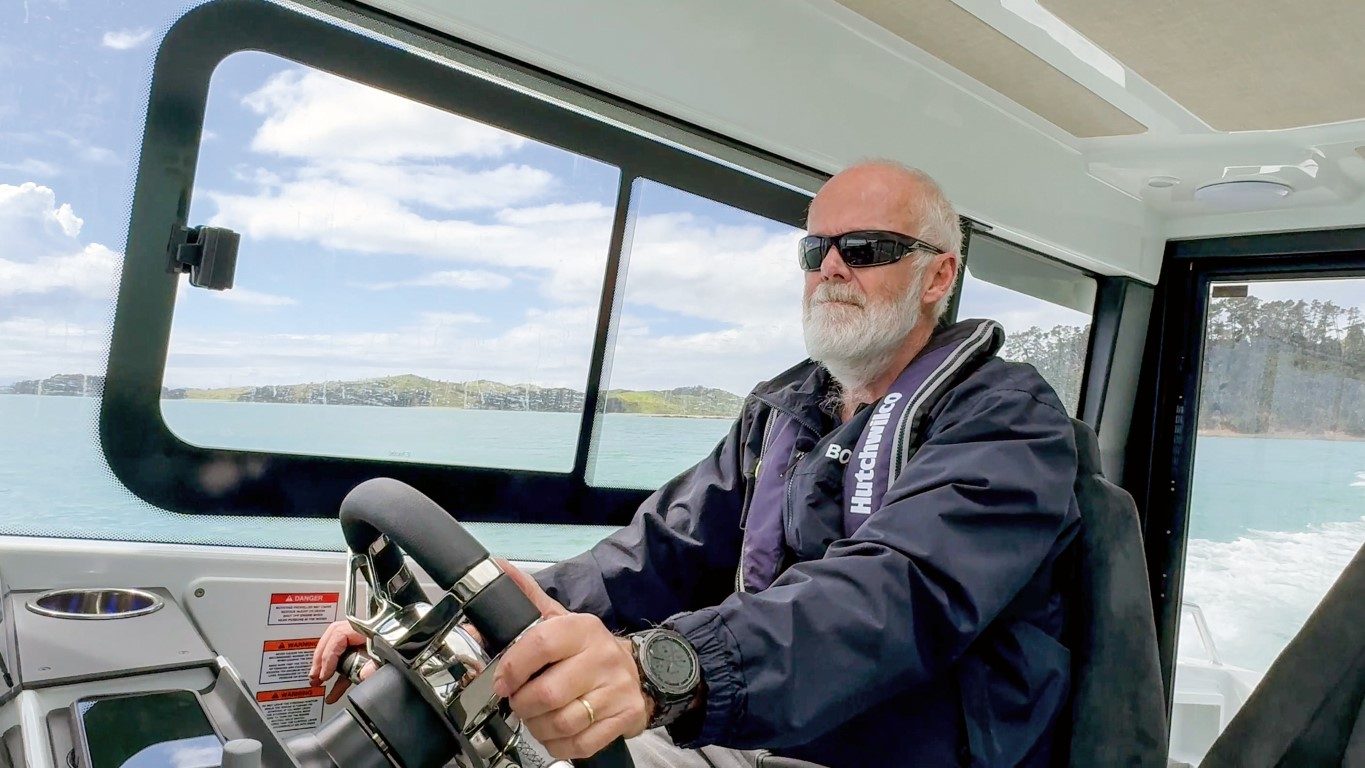
This size is notably popular in New Zealand, being small enough to be trailered, yet spacious enough for a comfortable overnight stay. While each boat in this category boasts unique features and, it must be noted, some disadvantages, most adhere to similar characteristics.
However, my perception underwent a significant shift when I arrived at Westhaven Marina and stepped aboard the Quarken 27. Quarken was founded in 2021 by some of the most renowned Finnish designers. Drawing inspiration from the power of nature in the Kvarken area of Finland, as well as centuries of Nordic seamanship and their own extensive experience in boatbuilding, they chose to break away from conventional boat design and start afresh, integrating efficient and practical innovations into their product.

The outcome is a striking and genuinely innovative design that has already secured Motorboat of the Show at the Helsinki International Boat Show, as well as accolades at the Berlin, Dusseldorf, and Cannes boat shows in 2022 and 2023. The Quarken 27 boasts an exceptional appearance and is ideally suited for the challenging Kiwi conditions.
One of the most apparent innovations is the large pilothouse-style cabin, which is offset to the starboard side. The front window features a slightly reversed rake angle and a substantial ‘eyebrow’ to shield the glass from glare and rain. On the port side of the cabin, there’s a high-gunwale, single-level walkway connecting the cockpit to the foredeck. Daniel remarked that he had taken his family out on the boat the previous weekend and had never felt as secure boating with small children as he did on the Quarken 27 Cabin. There is practically no place where they might stumble and accidentally slip overboard – truly a family-friendly vessel. Moreover, its design would also accommodate individuals with mobility challenges, as the high sides allow one to move around safely without requiring constant support.
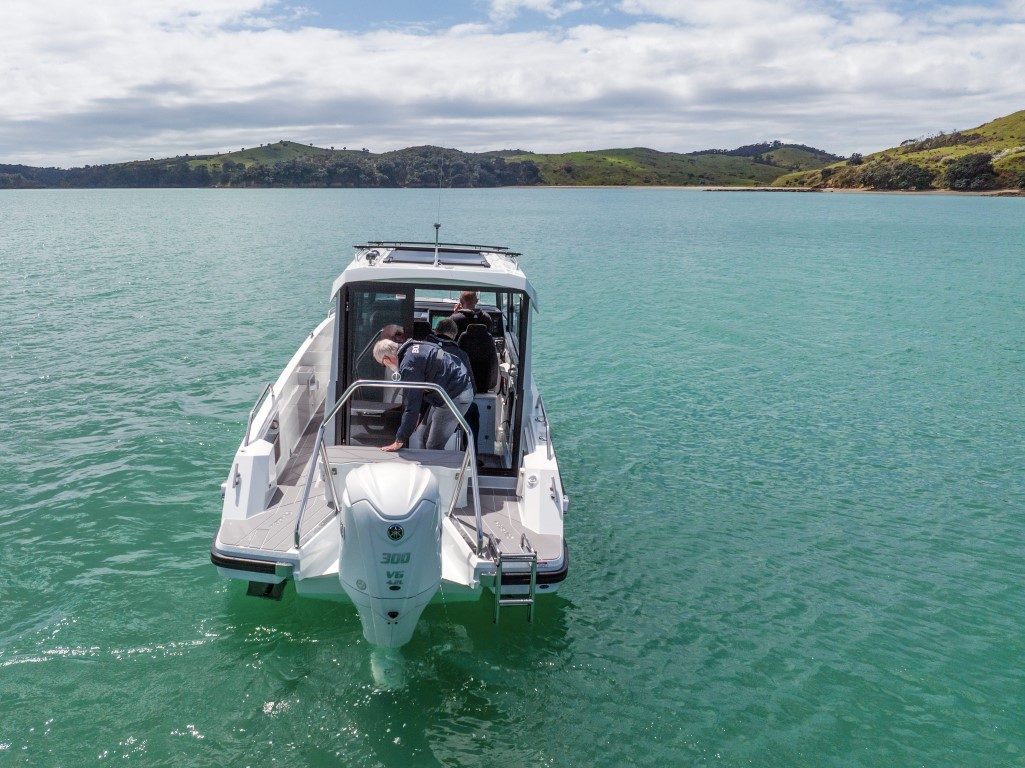
The expansive glass-encased cabin offers unobstructed 360-degree views, a feature rarely seen in a cabin boat. The sheer cabin sides boast waist-to-ceiling- height glass windows, and a sliding pilothouse door is situated on the port side. In conjunction with the three-section rear sliding door opened from either the port or starboard side, the cabin can be opened wide to take advantage of the breeze or securely sealed to provide a warm, snug interior shielded from harsh weather conditions. Additionally, a substantial sliding glass sunroof can be opened and closed depending on the weather or the skipper’s mood. The door and sunroof mechanisms represent an engineering marvel, with panels that smoothly glide along channels and lock into a flush-fit exterior – like an aircraft door.
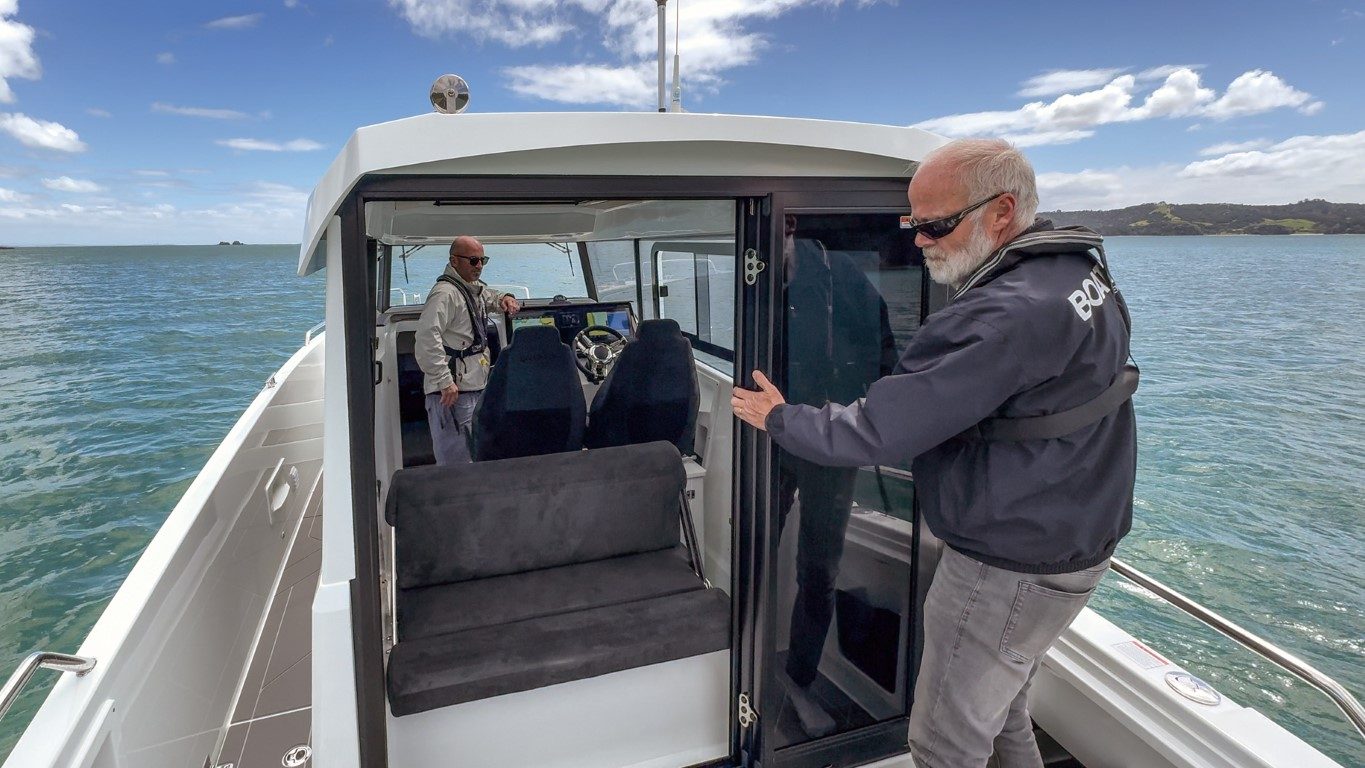
Early in the development process, Quarken made the strategic decision to collaborate exclusively with a single outboard manufacturer, ultimately selecting Yamaha. This decision enabled them to seamlessly integrate their onboard systems with the engine’s electronics. At the stern of the boat, a pristine white Yamaha F300 four-stroke engine, equipped with an integrated Digital Electric Steering (DES) module, was installed. This configuration requires only a single control loom extending from the motor, giving an exceedingly tidy and functional setup. Moreover, Yamaha boasts an extensive dealer network in New Zealand, guaranteeing that parts and servicing will never pose an issue, regardless of one’s location.

A boarding platform either side of the outboard, extending across the stern of the boat, leads to the cockpit, where a dual bench seat provides wet seating that can be utilised while facing either forward or aft. A stainless rail serves as a handrail, outboard protector, and water toy towing point. The entire cockpit and deck are covered in Smartdeck EVA decking, enhancing both functionality and aesthetic appeal.
Through the triple-sliding door into the cabin, a rear bench seat with a reversible backrest allows occupants to face either inward or outward. Unlike many boats, all passengers benefit from fantastic views, courtesy of the extensive glass windows. The rear seat also converts into a double berth, although with a maximum length of 1.5 metres it best suits children or shorter adults.

The helm seating comprises two pilot seats upholstered in plush fabric, mounted on a pod that includes a 59-litre fridge. The helm position sports a clean, minimalist layout featuring twin Garmin multifunction touchscreens and a single Yamaha Smartcraft touchscreen, all of which can be customised to suit the owner’s preferences – this reviewer’s ideal set-up.
Smart digital switches control vessel functions through a handful of buttons, while a joystick governs the recessed bow thruster. Moreover, the inclusion of a wireless induction charger for cell phones, controls for the trim tabs, and a remote control for the anchor winch adds to the helm’s convenience and functionality.
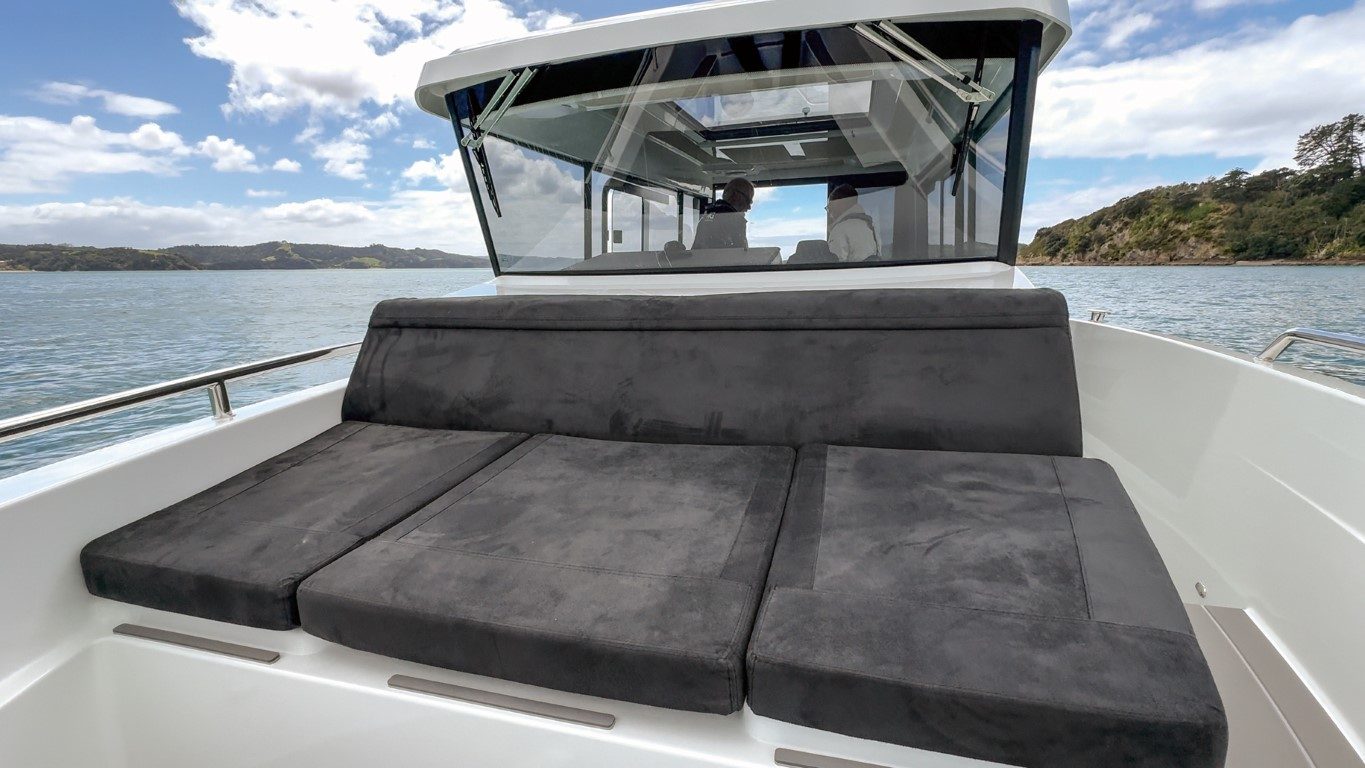
The remote anchor control proves especially useful when beach-hopping. The anchor can be deployed in deeper water, allowing the boat to be reversed towards the beach for unloading. A stern line pulled from the beach while using the winch first to lengthen the chain enough to disembark in shallow water and then to pull the boat off the beach again. It makes beach-hopping easy.
The overnight cabin, accessible through a sliding hatch, encompasses a spacious double berth, as well as a plumbed toilet and hand basin. A starboard-side window provides natural light, complemented by a hatch leading to the bow area. The interior is meticulously finished with a light-coloured wood finish that offsets the white gelcoat and grey carpet to create a harmonious and inviting atmosphere.
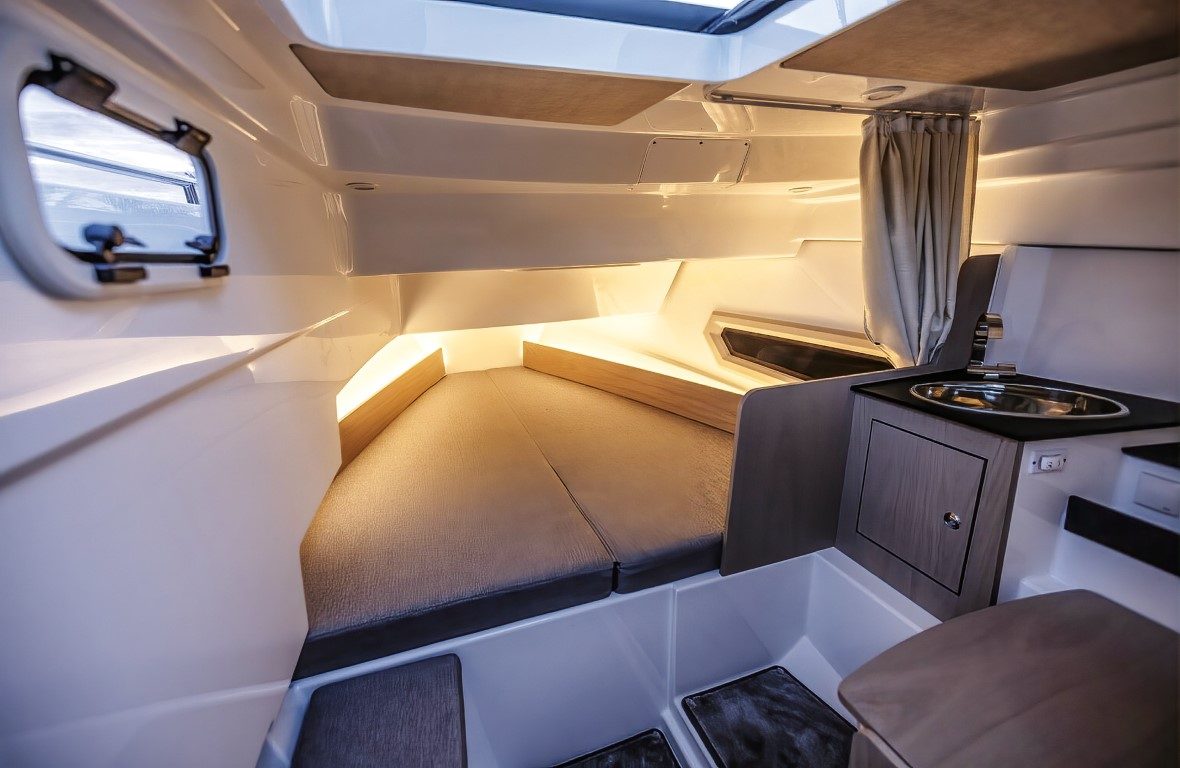
Exiting the main cabin through the port sliding door, the walkway offers ample space for an adult to move easily towards the bow. Here, a twin bench seat can be extended to form a double sun lounger or transformed into a dining area with an insert that can be raised, lowered, or folded back. Additionally, the bowsprit and anchor winch, positioned slightly to the port side, appear unconventional at first. However, this arrangement leaves space for a concealed bow ladder giving for easy beach access over the bow.

Upon leaving Westhaven Marina, Daniel suggested we capture the best photos just off Ponui Island, where a break in the clouds promised some sunlight. Despite being over 20 nautical miles away and with the constraint of having to collect his children from school, he assured us we would get there in about 35 minutes. I remained sceptical, considering that most boats would require over an hour to cover the distance – without factoring in 20-knot winds and the resulting chop.
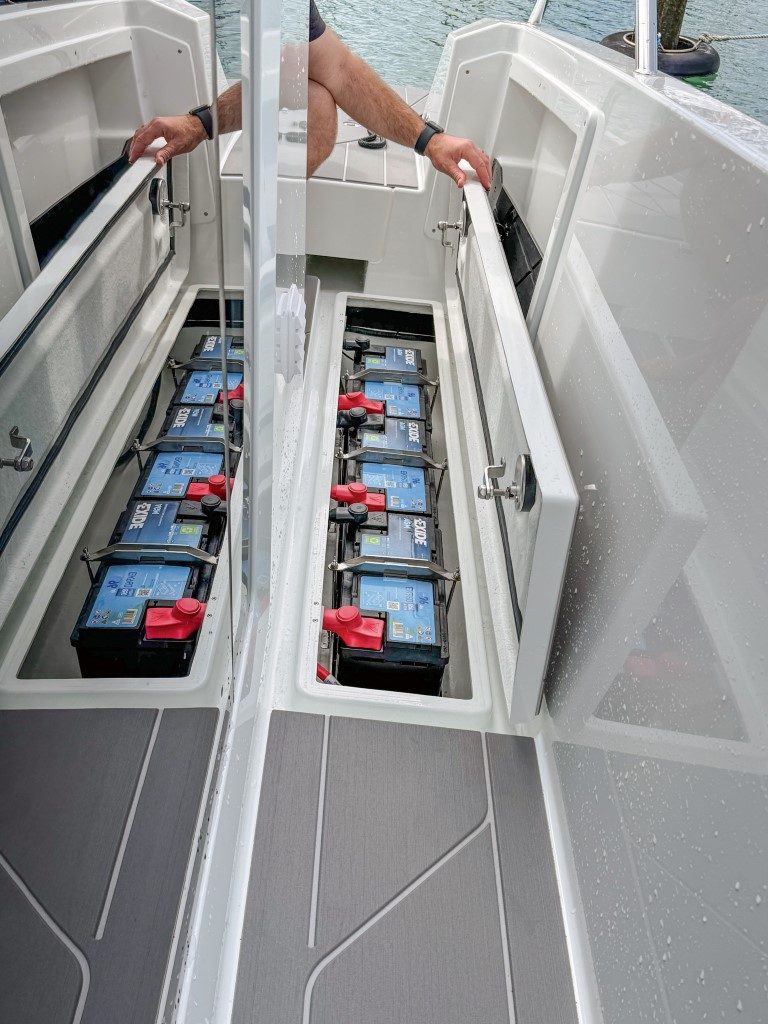
However, once we cleared the speed-restricted inner harbour, Daniel unleashed the engine. Effortlessly, we surged to 42 knots, leaving Browns Island behind as we navigated down the Waiheke Channel. Astonishingly, the engine had yet to reach its maximum RPM, maintaining what felt like a comfortable cruising speed.
This remarkable performance should be seen in context – unlike other boats that raise their bows at mid-throttle and demand significant acceleration to achieve optimal trim, the Quarken 27 remained admirably level across the entire rev range. The only discernible shift occurred when the hull began plaining, resulting in a sudden surge in speed. The twin-stepped hull proved incredibly efficient, effortlessly lifting the boat while reducing its wetted surface area and, consequently, minimising drag.
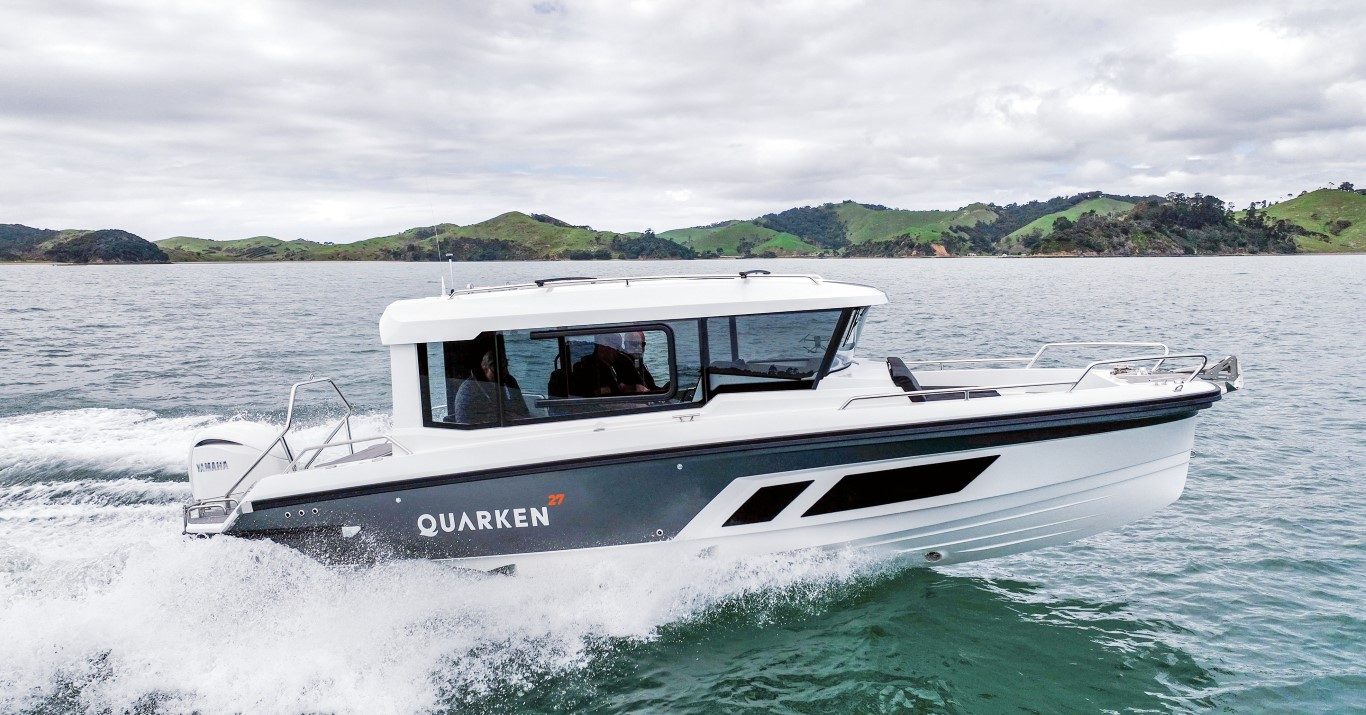
The boat exhibited exceptional fuel efficiency even at higher speeds. During our earlier voyage at just under 25 knots, the fuel consumption was 1.43 litres per nautical mile with the engine operating at 3700rpm. Given persistently high fuel prices, this efficiency stands as a significant advantage. Even at 42 knots, consumption remained below 2.5 litres per nautical mile.
Equally noteworthy was the remarkable comfort of the ride. The absence of yawing, partially aided by the automated trim tabs, allowed for agile manoeuvring at various speeds without compromising comfort. I put the boat to the test by powering through a ferry wake at close to 40 knots, only to find the impact was almost negligible, as if the wake were not even present. The axe bow sliced effortlessly through the waves, neither lifting nor significantly impeding our progress. Despite what appears a lower bow, it remained well above the waterline, effectively preventing any issues with spray. In fact, our photographer was able to capture running shots while seated in the bow area as we were traveling at more than 25 knots, which would not be possible in many boats.
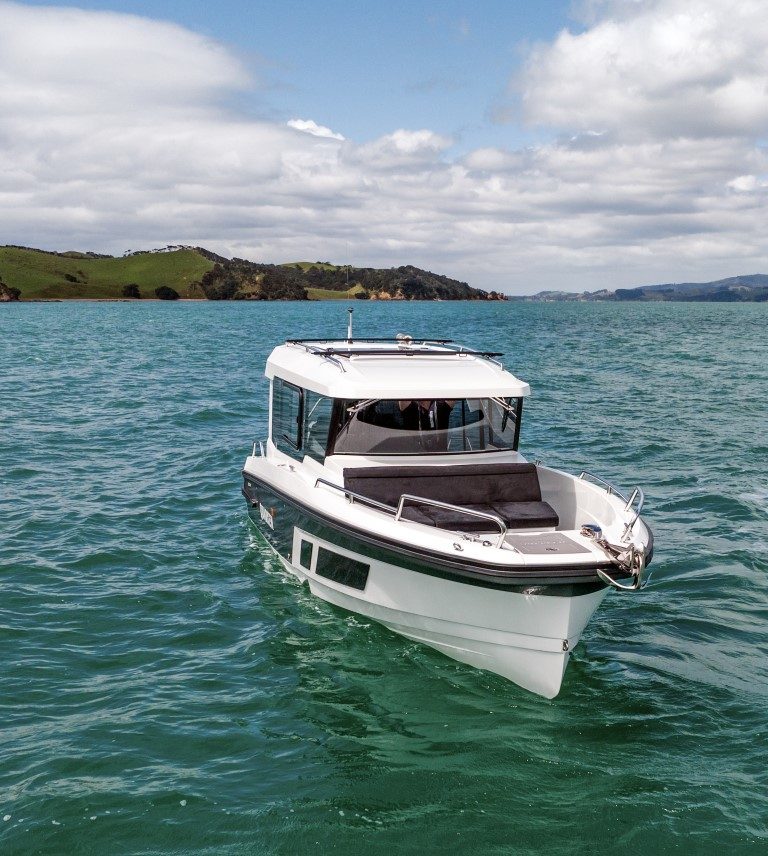
Was I impressed with the Quarken 27 Cabin? You bet! This is a boat that has better stability, more speed, better seakeeping, is considerably more economical to run, and overall is just a more pleasant boat to drive compared to many others in its size and engine category. This is the benefit of having a design that implements cutting-edge hull design and technology. The cabin is stylish and very functional, and particularly appeals to my preference for open, sunlit spaces that can be enclosed in adverse weather conditions. The sleeping arrangements really suit a couple or a family with children. The build quality is very, very, good and the engineering is exceptional.
And as exciting as the Quarken 27 Cabin is, Daniel Painter assures me that its bigger sister, the Quarken 35, due to launch next year, will be even better!

She feels really easy and comfortable to sail, even in a good breeze and a chop.
At first glance the boat appears to be a large centre console, although hidden beneath the console and forward area is a sizeable overnight cabin.
With classic styling, good performance and class-leading ride and handling, there’s a lot to like about the Caribbean 32.
Solar panels on the vast roof help keep the batteries charged.